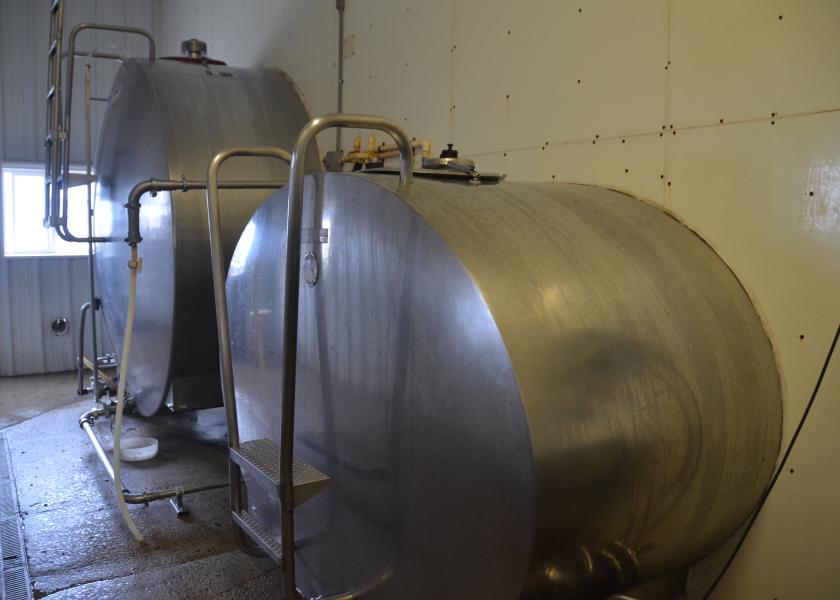What Are the Options for Non-saleable (Waste) Milk?

During challenging economic times, it is difficult to consider the financial loss that occurs when milk is withheld from sale for various reasons. The need for a safe food supply at all levels has placed increased attention on agricultural production practices. Concerns regarding the potential spread of pathogens, antimicrobial resistance, and other hazards surrounding biosecurity and safe animal feeding practices have brought attention to the issue of how to handle non-saleable or waste milk.
Waste milk can be generated in several ways from the farm to the final food product including waste water, by-products from manufacturing such as whey, returned finished product, and milk considered non-saleable or that has been rejected. Waste water used for washing milking equipment and tanks, cleaning the parlor, and flushing systems on the farm usually contains milk that is diluted with water. Similarly, waste water is generated as milk is further manufactured into finished products at a processing plant.
As waste water containing milk is generated, the proportion of milk to water is important. When more organic matter, which in this case is milk, is present, the biochemical oxygen demand (BOD) is greater, which means that more oxygen is required by the bacteria that degrade the organic matter. Odors and slowed degradation result when the oxygen supply is insufficient. The BOD for milk is 5 times higher than that of manure and places greater demands on a treatment system.
Waste milk should not be dumped into drains or discharged into surface water because of the disruption it can cause to biological systems leading to potential harm to vegetation, wildlife, and fish. If milk is disposed of via a septic system, the necessary permits need to be in place. Consult your local or state regulatory agencies for the proper process and permits in your area. Other disposal options that may have a fee attached are an anaerobic digester that can accommodate food wastes, a sewage treatment plant, or a landfill.
An option for the farm, if storage space permits, is to add milk and/or milkhouse waste to the manure storage system for eventual land application. If this route is chosen, a Nutrient Management Plan or Manure Management Plan should be followed.
Many farms chose to feed their waste milk to calves. Keep in mind the reason why that milk was considered as waste milk when making the choice to feed it to calves. Proper storage and handling of waste milk are necessary if it will be fed to calves. A great deal of research surrounds this practice and is beyond the scope of this article. More information on pasteurizing and feeding non-saleable milk to calves.
Additionally, waste milk from the farm as well as milk that has been returned from commerce, for example milk that is near the sell-by date, may be considered as a feed source for other livestock species. This may be of particular interest to producers with pigs; however, additional state regulations may apply when determining what is acceptable to feed to other livestock, especially swine, or what is considered as “garbage.” Here are some questions to consider when determining whether waste milk or other food processing residue is suitable as animal feed (Food Processing Residual Management Manual 2001).
- Is the food product free of physical hazards such as glass, metal, or plastic that could injure an animal consuming it?
- Is the product free of chemical or microbiological hazards that could cause illness or injury to the animal?
- Is the quantity and quality consistent to allow incorporation into the animal’s diet with minimal disruptions?
- Is there enough of the milk or product to pursue it as a feed option?
- Will the product provide a desirable energy or protein source when incorporated into the diet?
- Is it palatable or likely to be consumed by the animal?
- Are there practical options for handling and storage until it is fed?
- What is the biosecurity risk that may accompany the feeding of waste milk or other food processing residual? Can that product lead to the spread of disease?
While maximizing the value of your milk is critical during challenging economic times, careful consideration should be taken on the true value of repurposing waste milk. Taking the time to evaluate waste milk as a product can assist you in making the best choice for use or disposal.







